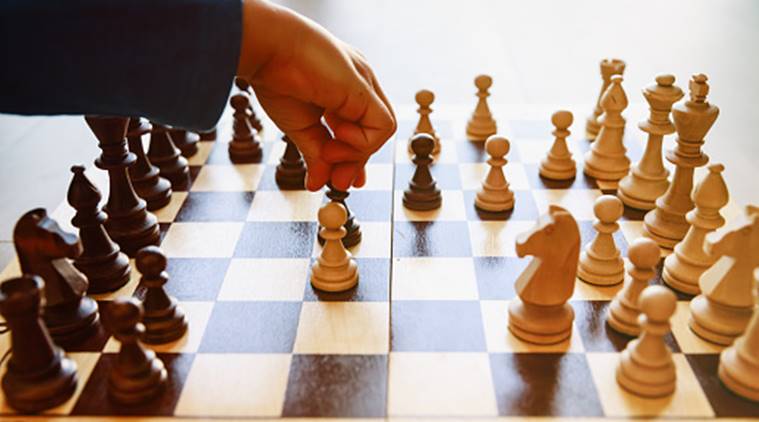There are many moves you can make on your turn. Some professionals have created algorithms for chess so they almost never lose. Each piece type moves differently, with the most powerful being the queen and the least powerful the pawn. The objective is to checkmate the opponent's king by placing it under an inescapable threat of capture. To this end, a player's pieces are used to attack and capture the opponent's pieces, while supporting one another. During the game, play typically involves exchanging pieces for the opponent's similar pieces, and finding and engineering opportunities to trade advantageously or to get a better position. In addition to checkmate, a player wins the game if the opponent resigns, or, in a timed game, runs out of time. There are also several ways that a game can end in a draw.
In competitive games, the colors are allocated by the organizers; in informal games, the colors are usually decided randomly, for example by a coin toss, or by one player's concealing a white and black pawn in either hand and having the opponent choose. White moves first, after which players alternate turns, moving one piece per turn (except for castling, when two pieces are moved). A piece is moved to either an unoccupied square or one occupied by an opponent's piece, which is captured and removed from play. With the sole exception of en passant, all pieces capture by moving to the square that the opponent's piece occupies. Moving is compulsory; it is illegal to skip a turn, even when having to move is detrimental. A player may not make any move that would put or leave the player's own king in check. If the player to move has no legal move, the game is over; the result is either checkmate (a loss for the player with no legal move) if the king is in check, or stalemate (a draw) if the king is not. Each piece has its own way of moving. In the diagrams, the dots mark the squares to which the piece can move if there are no intervening piece(s) of either color (except the knight, which leaps over any intervening pieces).

The king moves one square in any direction. The king also has a special move called castling that involves also moving a rook.
A rook can move any number of squares along a rank or file, but cannot leap over other pieces. Along with the king, a rook is involved during the king's castling move.
A bishop can move any number of squares diagonally, but cannot leap over other pieces.
The queen combines the power of a rook and bishop and can move any number of squares along a rank, file, or diagonal, but cannot leap over other pieces.
A knight moves to any of the closest squares that are not on the same rank, file, or diagonal. (Thus the move forms an "L"-shape: two squares vertically and one square horizontally, or two squares horizontally and one square vertically.) The knight is the only piece that can leap over other pieces.
A pawn can move forward to the unoccupied square immediately in front of it on the same file, or on its first move it can advance two squares along the same file, provided both squares are unoccupied (black dots in the diagram); or the pawn can capture an opponent's piece on a square diagonally in front of it on an adjacent file, by moving to that square (black "x"s). A pawn has two special moves: the en passant capture and promotion.